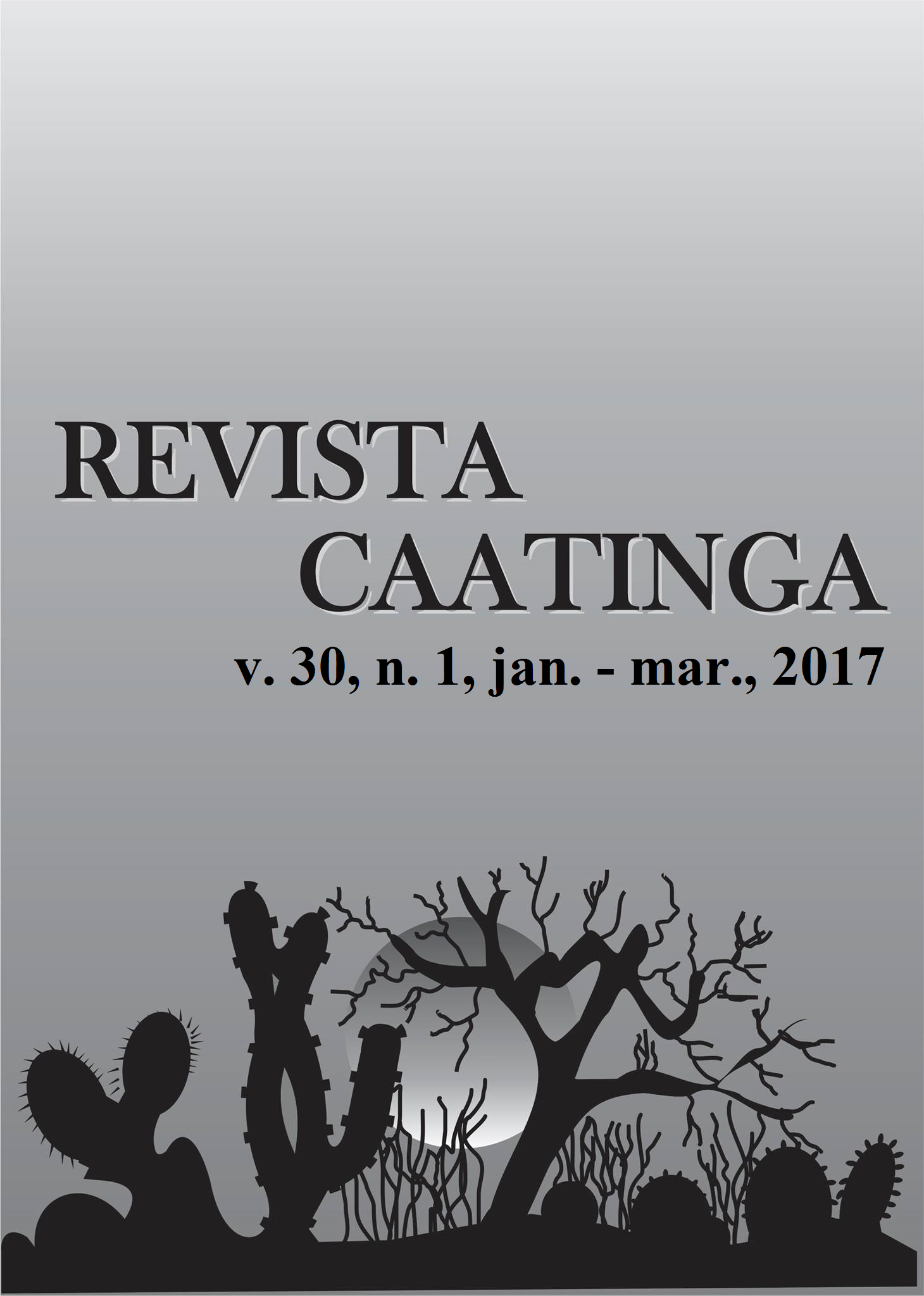WEED INTERFERENCE IN COTTON PLANTS GROWN WITH REDUCED SPACING IN THE SECOND HARVEST SEASON
DOI:
https://doi.org/10.1590/1983-21252017v30n101rcKeywords:
Sowing season. Gossypium hirsutum L.. Interference period. Weeds.Abstract
Changes in row spacing may result in changes in crop and weed behavior and crop-weed competition. A study was performed to determine the periods of weed presence and weed control in cotton sown with 0.76 m spacing between planting rows. Cotton cultivar FM 993 was sown on 01/08/2010 with the aim of reaching a density of 190,000 seeds ha-1. Treatments with either weed presence or weed control during the first 0, 5, 10, 15, 22, 29, 36, 43, 50, 57, 64, 71, and 190 days of cultivation were established to determine the period prior to weed interference (PPI), total period of interference prevention (TPIP) and critical period of weed control (CPWC). The weed species with high relative importance were Amaranthus retroflexus, Bidens pilosa, Eleusine indica, Digitaria horizontalis, Alternanthera tenella, and Commelina benghalensis. Considering a maximum yield loss of 5%, the PPI was established 11 days after cotton emergence (DAE), the TPWC at 46 DAE, and the CPWC between 11 and 46 DAE, for a total duration of 35 days. Considering a maximum acceptable yield loss equal to the standard deviation for the weed-free treatment, the PPI was established at 6 DAE, the TPWC at 55 DAE, and the CPWC between 6 and 55 DAE for a total duration of 49 days.Downloads
References
AZEVÊDO, D. M. P. et al. Período crítico de competição entre as plantas daninhas e o algodoeiro anual irrigado. Pesquisa Agropecuária Brasileira, Brasília, v. 29, n. 9, p. 1417-1425, 1994.
CHANDI, A. et al. Interference and control of glyphosate-resistant and -susceptible palmer amaranth (Amaranthus palmeri) populations under greenhouse conditions. Weed Science, Champaign, v. 61, n. 2, p. 259-266, 2013
EMPRESA BRASILEIRA DE PESQUISA AGROPECUÁRIA - EMBRAPA. Centro Nacional de Pesquisa de Solos (CNPS). Sistema brasileiro de classificação de solos. 3. ed. Brasília, DF: EMBRAPA, 2013. 353 p.
FAIRCLOTH, J. C. et al. Na evaluation of alternative cotton harvesting methods in Northeast Louisiana – A compararison of the brush stripper and spindle harvester. The Journal of Cotton Science, Baton Rouge, v. 8, n. 1, p. 55-61, 2004.
FERRARI, S. et al. Desenvolvimento e produtividade do algodoeiro em função de espaçamentos e aplicação de regulador de crescimento. Acta Scientiarum Agronomy, Maringá, v. 30, n. 3, p. 365-371, 2008.
GREEN-TRACEWICZ, E.; PAGE, E. R.; SWANTON, C. J. Shade avoidance in soybean reduces branching and increases plant-to-plant variability in biomass and yield per plant. Weed Science, Champaign, v. 59, n. 1, p. 43-49, 2011.
ISAAC, R. A.; GUIMARÃES, S. C. Banco de sementes e flora emergente de plantas daninhas. Planta Daninha, Viçosa, v. 26, n. 3, p. 521-530, 2008.
KAGGWA-ASIIMWE, R.; ANDRADE-SANCHEZ, P.; WANG, G. Plant architecture influences growth and yield response of upland cotton population density. Field Crops Research, Amsterdam, v. 145, n. 145, p. 52-59, 2013.
KNEZEVIC, S. Z. et al. Critical period for weed control: the concept and data analysis. Weed Science, Champaign, v. 50, n. 6, p. 773-786, 2002.
LIU, J. G. et al. The importance of light quality in crop–weed competition. Weed Research, Oxford, v. 49, n. 2, p. 217-224, 2009.
MacRAE, A. W. et al. Cotton yield loss potential in response to length of palmer amaranth (Amaranthus palmeri) interference. The Journal of Cotton Science, Baton Rouge, v.17, n.1, p.227-232, 2013.
MAROIS, J. J. et al. Effect of row width and nitrogen on cotton morphology and canopy microclimate. Crop Science, Madison, v. 44,n. 3, p. 870-877, 2004.
MORTENSEN, D. A.; BASTIAANS, L.; SATTIN, M. The role of ecology in the development of weed management systems: an outlook. Weed Research, Oxford, v. 40, n. 1, p. 49-62, 2000.
MUELLER-DOMBOIS, P.; ELLENBERG, H. Aims and methods of vegetation ecology. New York: John Willey and Sons, 1974. 547 p.
RIGOLI, R. P. et al. Habilidade competitiva relativa do trigo (Triticum aestivum) em convivência com azevém (Lolium multiflorum) ou nabo (Raphanus raphanistrum). Planta Daninha, Viçosa, v. 26, n. 1, p. 93-100, 2008.
SALGADO, T.P. et al. Períodos de interferência das plantas daninhas na cultura do algodoeiro (Gossypium hirsutum). Planta Daninha, Viçosa, v. 20, n. 3, p. 373-379, 2002.
SILVA, A. V. et al. Crescimento e desenvolvimento do algodoeiro em diferentes configurações de semeadura. Bragantia, Campinas, v. 65, n. 3, p. 407-411, 2006.
STEPHENSON, D. O. et al. Effect of twin-row planting pattern and plant density on cotton growth, yield, and fiber quality. The Journal of Cotton Science, Baton Rouge, v. 15, n. 3, p. 243-250, 2011.
SUGANUMA, M. S. et al. Comparando metodologias para avaliar a cobertura do dossel e a luminosidade no sub-bosque de um reflorestamento e uma floresta madura. Revista Árvore, Viçosa, v. 32, n. 2, p. 377-385, 2008.
VIDAL, R. A. et al. Initialism: a new term to describe the first mechanism of negative interaction between weeds and crops. Journal of Plant Diseases and Protection, Braunschweig, v. 21, n. 1, p. 595-98. 2008.
Downloads
Published
Issue
Section
License
Os Autores que publicam na Revista Caatinga concordam com os seguintes termos:
a) Os Autores mantêm os direitos autorais e concedem à revista o direito de primeira publicação, com o trabalho simultaneamente licenciado sob a Licença Creative Commons do tipo atribuição CC-BY, para todo o conteúdo do periódico, exceto onde estiver identificado, que permite o compartilhamento do trabalho com reconhecimento da autoria e publicação inicial nesta revista, sem fins comerciais.
b) Os Autores têm autorização para distribuição não-exclusiva da versão do trabalho publicada nesta revista (ex.: publicar em repositório institucional ou como capítulo de livro), com reconhecimento de autoria e publicação inicial nesta revista.
c) Os Autores têm permissão e são estimulados a publicar e distribuir seu trabalho online (ex.: em repositórios institucionais ou na sua página pessoal) a qualquer ponto antes ou durante o processo editorial, já que isso pode gerar alterações produtivas, bem como aumentar o impacto e a citação do trabalho publicado (Veja O Efeito do Acesso Livre).







